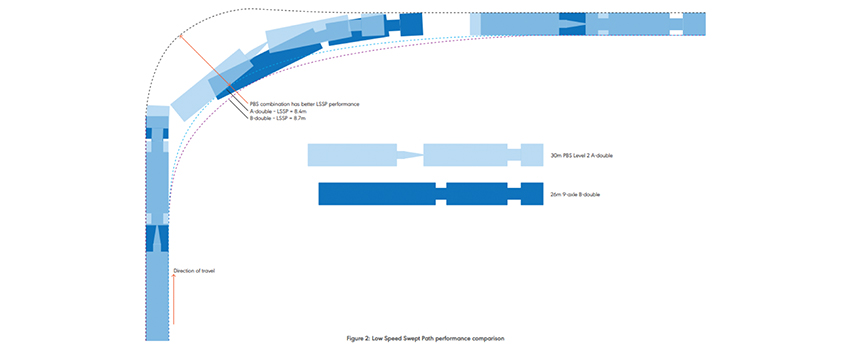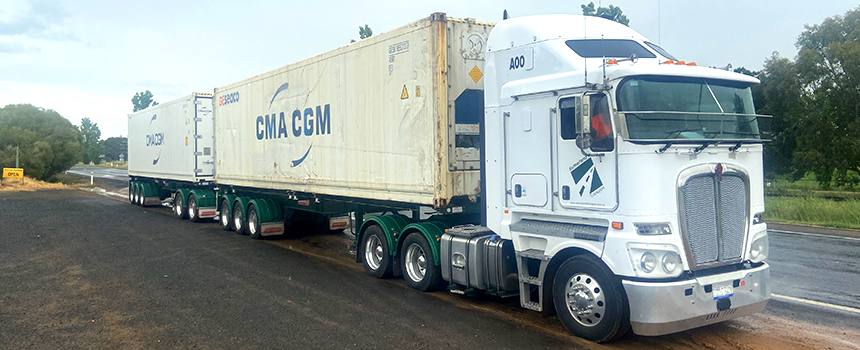What exactly is PBS?
PBS is often lauded as the next generation of heavy vehicle legislation and policy, however a question for many prospective entrants into the scheme is what is PBS and how does it benefit me?
To better understand this, the first step is to think about the normal rules for heavy vehicle design. We refer to these as the ‘prescriptive’ rules because they ‘prescribe’ or specifically describe what a heavy vehicle can look like. These rules aren’t arbitrary however, and they serve a very important role in ensuring the safety of the heavy vehicle fleet is safe for use on public roads. The prescriptive rules are set up so that if you fall within the prescribed specification, your vehicle should have the required level of safety, which is the real goal here.

The PBS scheme has the same goal (i.e. having the required level of safety) but it acknowledges that there are multiple ways to achieve the same level of safety as the prescriptive rules offer. This flexibility can allow PBS vehicles to be designed for specific operations and achieve higher levels of productivity.

The following diagram from the National Heavy Vehicle Regulators’ PBS guide for road managers represents an example of this:

When making a 90-degree turn, the 30-metre PBS A-double requires less room than the prescriptive 26‑metre B-double. This is even accounting for the difference in length and number of axles leading to more payload being carried by the A-double.
Comparing the two we see that they achieve the same general outcomes, but PBS has the advantage of the added flexibility to optimise the designs for the freight task.
In terms of the cost for these advantages, to enable the PBS scheme it is important that being able to directly control for safety be done rigorously and thoroughly. For this purpose, the NHVR and the PBS scheme require that all vehicles going through PBS be assessed by an accredited PBS assessor such as those at Advantia. This ensures that any vehicles operating under PBS has been fully investigated and found to have both the required safety and the performance that the growing Australian freight tasks demands.
Now where this really comes into play is that we can allow longer and heavier combinations on many of the same roads which we allow prescriptive heavy vehicle combinations. This is because they have the same, or improved, safety levels and impacts on the road and road networks as the prescriptive vehicles. An example of this being implemented is the PBS 2B network in New South Wales.
The PBS 2B network very closely matches the prescriptive B-double network however on the B‑double network there is a length limit of 26 metres while on the PBS 2B network combinations can be allowed to operate at up to 30 metres. This allows for significantly more productive combinations to be used, such as Sutherland Transport’s A-double with a tandem axle dolly – capable of hauling two 40’ containers per trip, while a B-double would be limited to a single 40’ and a 20’ container. For the Sutherlands freight task, this has meant a halving of truck trips to Port Botany, enabling 2 x 40’ refrigerated containers to be transported with the 30m A-Double, instead of the one 40’ refrigerated container on a Single Semi-Trailer.

Photo credit – Sutherlands Transport
In a recent NHVR Review of Major Crash Rates for Australian Higher Productivity Vehicles 1, the safety credentials of PBS combinations have been evaluated with an ‘overall improvement in safety outcomes of 60% when compared to the conventional fleet on a distance travelled basis’. As a direct comparison, the review found PBS A-Doubles had an accident rate of 6.7 per 100 million kilometres, whereas conventional/prescriptive B-Doubles had an accident rate of 12 per 100 million kilometres and the Semi-Trailer a rate of 19.3 per 100 million kilometres.
If you think PBS may be a good fit for your organisation or wish to find out more information on this topic, please contact Advantia here, Contact Advantia
1 https://www.nhvr.gov.au/files/202105-1232-cilta-ntarc-review-of-major-crash-rates-hpv-2015-19.pdf
Get more like this in your inbox
Subscribe to our Newsletter and never miss a post.